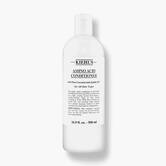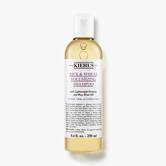Nighttime showers can be super relaxing after a long day. But if your hair doesn’t dry on its own before you’re ready to crawl into bed, you’re faced with a dilemma: Do you stay up past your bedtime to blow dry it? Or do you suck it up, go to bed with wet hair, and hope you don’t look like you got electrocuted when you wake up?
On the one hand, drying your hair with heat tools too often can be damaging to your strands. On the other, wet hair is immensely fragile—and going to bed with wet strands can leave you with frizzy, tangled hair come sunrise. In other words, both avenues have pros and cons—it’s one reason many people choose to shower in the morning.
That being said, sometimes, late-night showers are unavoidable. So here, we’ll give you the dish on sleeping with wet hair and the potential challenges that can arise when doing so. You’ll also discover our top tips for keeping your hair soft and smooth throughout the night, so you don’t need to wash your hair again in the morning. Keep reading to learn what you need to know about sleeping on wet hair.
Can You Sleep With Wet Hair?
Really quickly, open up a new tab on your browser and type “can you sleep with wet hair?” into Google. The results that pop up are confounding and contradictory (plus, half of the “related searches” revolve around old wives’ tales that claim sleeping with wet hair can cause everything from minor headaches to blindness). The truth is that yes, you can sleep with wet hair (and no, you won’t wake up suddenly blind).
The main danger of going to bed with wet hair is that it can cause hair concerns like frizzing, tangles, and breakage. This is because hair is more fragile when it’s wet. Healthy hair, when dry, can stretch and snap back to its original shape easily. When filled with water, however, hair becomes less flexible and more prone to breakage (fun tip: that’s why we recommend gently combing rather than brushing when your hair is wet). Friction from moving your head around while you sleep—particularly if you toss and turn a lot—can cause strands to snap. It can also cause your hair to tangle, knot, or frizz, especially if you have longer tresses.
In summary, you can sleep with wet hair, but we aren’t saying you necessarily should. Sleeping with a dry mane is preferable.
How To Sleep With Wet Hair: 5 Kiehl’s Tips
If you will be hitting the hay with wet strands, there are steps you can take to help mitigate damage. See our tips below to discover the best way to sleep with wet hair.
Tip #1:
Shampoo and Condition Your Hair
Generally speaking, you don’t need to shampoo every day. If you’re planning on going to sleep with wet hair, however, we do recommend lathering up and conditioning while in the shower to help ensure your hair is clean, soft, and hydrated.
We suggest using a high-quality shampoo and conditioner, such as Amino Acid Shampoo and Amino Acid Conditioner. This lightweight duo with coconut oil and amino acid gently cleanses and helps soften hair, leaving it feeling strong, hydrated, and manageable. The customer-favorite pair is suitable for all hair types and can be used whenever you lather up for smooth, shiny-looking strands.
Tip #2:
Nourish Your Mane With a Mask
To help prevent breakage when sleeping on wet hair, pamper your strands with a nourishing hair mask, like Olive Fruit Oil Deeply Reparative Hair Mask. Designed for dry and under-nourished hair, this indulgent formula with olive oil and avocado oil moisturizes and helps strengthen weak, brittle hair. When used regularly, it also helps protect brittle strands from aggressors that can cause further damage. Apply it from your mid-lengths to ends while in the shower, then let the formula sit for a minimum of three minutes (longer if your hair is super damaged). Then rinse the mask out with lukewarm water and squeeze out any excess water before combing your damp strands.
Tip #3:
Apply a Conditioning Leave-In Treatment
To help prevent breakage, we suggest combing a leave-in treatment, like Smoothing Oil-Infused Leave-In Concentrate, throughout your mane. This lightweight leave-in conditioner nourishes and smooths hair without weighing it down, leaving it looking sleek and shiny. Apply a dime-sized amount to damp strands at night, then add a bit more product in the morning to help refresh your air-dried tresses.
Tip #4:
Try a Protective Hairstyle
To help keep your hair under control while sleeping on it, twist your mane into two loose braids before falling asleep. This will help keep your hair in place, reducing the amount of friction exerted on your strands as you toss and turn. As a bonus, braiding your hair when it’s damp gives it a natural-looking wave when dry, streamlining your morning routine (just use a touch of serum to smooth any unruly areas and add a bit of glossy shine to your slept-in style).
Tip #5:
Splurge On a Silk Pillowcase
It may seem like a stretch, but the type of bedding you use really can affect how much damage your hair incurs while sleeping. If you frequently sleep with wet hair, we suggest investing in a silk pillowcase. Silk doesn’t retain moisture well, thereby allowing your hair to dry faster. More importantly, it’s slick and produces less friction when compared with a cotton or flannel pillowcase. The reduction in friction can help reduce the amount of damage your hair incurs, allowing it to look smoother, softer, and healthier over time.
Next: Now that you know how to sleep with wet hair, check out our article 8 Summer Hair Mishaps And How To Manage Them.







